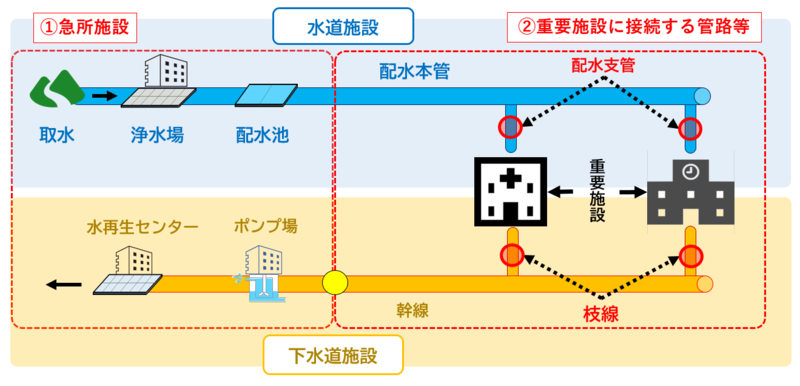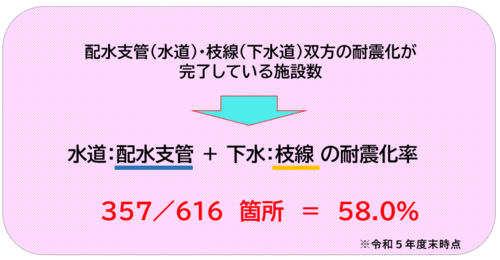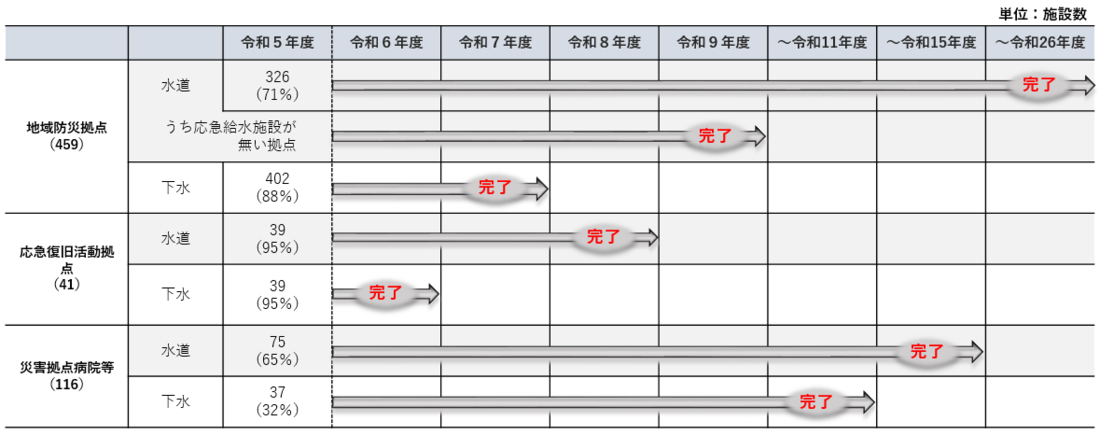- Yokohama-shi Top Page
- Living, procedures
- Community Development and Environment
- Rivers and sewers
- Sewer
- Disaster prevention and disaster countermeasures
- Water and sewage earthquake countermeasure
The text is from here.
Water and sewage earthquake countermeasure
Last updated on March 28, 2025.
How to promote earthquake resistance of water and sewage facilities that connect to important facilities such as evacuation shelter and medical facilities
Water and sewage systems are infrastructure that supports the lives and lives of citizens, and the 2024 Noto Peninsula Earthquake reminded us of the importance of earthquake resistance in water and sewer pipelines connected to important facilities such as refuge and medical facilities.
Until now, in Motoichi, we have been promoting the earthquake resistance of water and sewer pipes connected to important facilities, and we will introduce how to proceed with the earthquake resistance of these facilities.
- Important facilities positioned in Motoichi
- Concept of earthquake resistance of water and sewer pipes
- Seismic status
- How to proceed in the future
- Water and sewage seismic retrofit plan
- Reference
| evacuation shelter | Designated evacuation sites (elementary schools, junior high schools, etc.) | 459 facilities |
|---|---|---|
| Emergency recovery activity base | City Hall, ward office, Public Works Office, prefectural office, fire department, police headquarters, etc. | 41 facilities |
| Disaster base hospitals, etc. | Disaster base hospitals, emergency hospitals, emergency notification hospitals, etc. | 116 facilities |
| Total | 616 facilities |
In the past large-scale earthquakes, damage has been concentrated on small pipes (water supply: water distribution pipes, sewerage: branch lines), and the function of pipes with large pipes (water supply: water distribution mains, sewerage: branch lines) Is almost secured. Based on these circumstances, Motoichi is focusing on the earthquake resistance of small pipes related to important facilities (2 in the figure).
Please refer to approach of each bureau for approach of earthquake resistance of water and sewage about urgent facility (1 in figure).

Image of water and sewage facilities
As of the end of FY2023, approximately 60% of water and sewerage pipelines connecting to important facilities, which are implementing earthquake resistance, have been completed. .

Seismic rate of pipelines connected to important facilities
In order to promote the seismic resistance of water and sewerage pipelines connected to important facilities, we will strengthen cooperation in Water Works Bureau and Sewerage and Rivers Bureau, and share and coordinate the development plans and business progress of water and sewage facilities, thereby efficiently increasing the number of important facilities with earthquake resistance in both water and sewage systems.

Business schedule
In order to be able to use water as before even in the event of a disaster, it is important to secure both the water supply and the sewer functions.
For this reason, the plan formulated to promote earthquake resistance together with water and sewage to build a water and sewage system that is resistant to disasters is the water and sewage earthquake resistance plan.
Specifically, in addition to seismic plans for water supply and sewerage facilities, we also specify seismic plans for water and sewage facilities that are connected to important facilities (evacuation shelter, emergency recovery bases, disaster base hospitals, etc.).
Yokohama-shi water and sewage earthquake resistance plan (PDF: 149KB)
⋄ Efforts to make water supply earthquake-resistant
⋄ Efforts for Seismic Improvement of Sewerage
You may need a separate PDF reader to open a PDF file.
If you do not have it, you can download it free of charge from Adobe.
![]() To download Adobe Acrobat Reader DC
To download Adobe Acrobat Reader DC
Inquiries to this page
Management Promotion Division, Sewerage and Rivers Bureau Management Promotion Department
Phone: 045-671-2838
Phone: 045-671-2838
Fax: 045-664-0571
E-Mail address [email protected]
Page ID: 518-262-440







